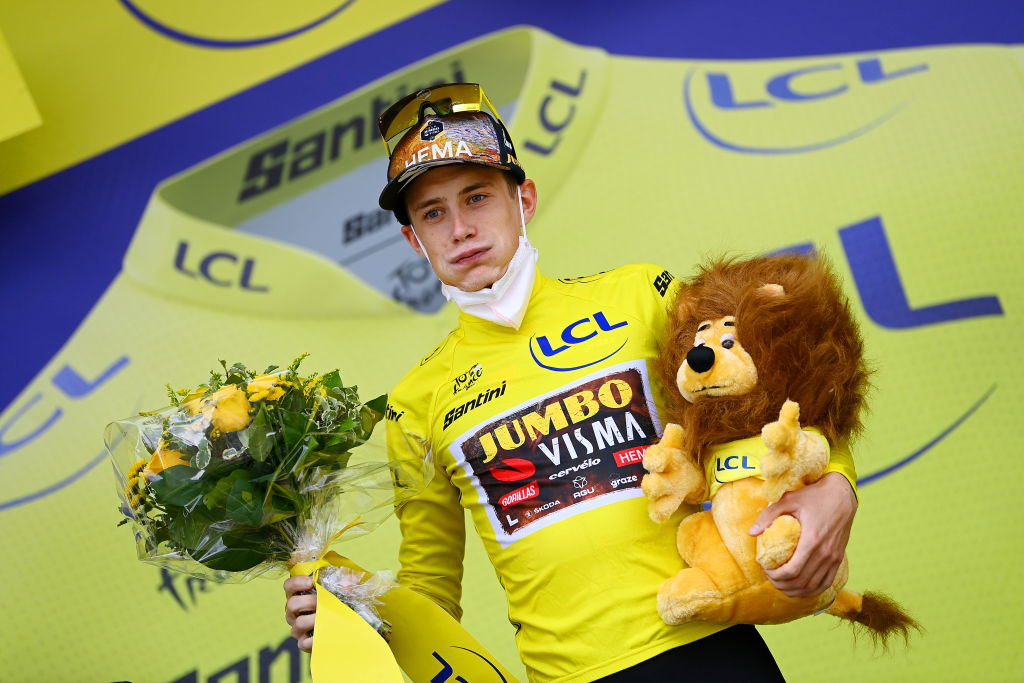'I wanted to attack, and luckily, I could' — Vingegaard into yellow dream at Tour de France
Jumbo-Visma rider is still wary of threat posed by Tadej Pogačar in the coming days


Denmark's Golden Age was a moment of intense productivity in the creative arts in the first half of the 19th century, one that heralded a whole new era in the fields of painting, literature, architecture and music for the Scandinavian country.
Artists like Christen Købke and Martinus Rørbye, authors like Hans Christian Andersen and philosophers like Søren Kierkegaard all came to the fore during the early 19th century, the peak of Denmark's cultural impact.
It was a period that came out of decades of instability and uncertainty in Denmark; out of a dearth came a blossoming, a whole new landscape, a new age.
On Wednesday, Jonas Vingegaard of Jumbo-Visma became the first Dane since Michael Rasmussen in 2007 to wear the yellow jersey at the Tour de France. Rasmussen's tale ended badly, after he left the race early, had his contract terminated by his team, and later admitting to using performance-enhancing drugs during his career.
That was the famine. Vingegaard, and the new generation of Danish talent, is the feast.
This might yet herald cycling's Danish golden age.
The 25-year-old came of age on the Cold du Granon on Wednesday, winning the queen stage in the Alps, and putting 2-51 into reigning champion and yellow jersey wearer Tadej Pogačar in the process.
The latest race content, interviews, features, reviews and expert buying guides, direct to your inbox!
"I was getting energy from hearing that the gap was growing, but it was also a really brutal climb, and I was suffering a lot and I just wanted it to be over. I was completely on the limit from 3km to go already," Vingegaard said in his post-stage press conference. "To be honest, when we did the recon of the stage, I didn’t do the last climb on the bike. I jumped in the car, so I didn’t experience it myself. Today I did, and it was a brutal climb."
It was the climax of an intense day of riding by the Jumbo team, who put the yellow jersey under pressure from early on, and the plan finally came to fruition at the end.
The team rode hard on the Col du Télégraphe, and then on the Col du Galibier too, which saw Pogačar face a stern test as repeated men in brown, or whatever the colour is, attacked. It was a gamble that could have bankrupt Vingegaard and his teammate Primož Roglič, but in the end it paid off.
"It’s true that it was a risk, but on the other hand, I think both Primož and I have been second in the Tour already," Vingegaard said. "Last year, it was nice for me to be second on the Tour.
"If I didn’t try anything here, I’d probably be second again, but I preferred to try something and reach out for the victory, which we did today. I think it shows the mentality of the team, it’s incredible for me and also the team.
"We wanted to attack from far, we wanted to try with Primož, and I think that shows again how big a rider Primož is. He was up for this plan, he really fought for it, and he went deep so we could challenge Tadej."
Cracks appear
Despite Pogačar's final crack being so definite, and damaging to his chances of overall victory, Vingegaard said that he had no idea that the damage was coming. He just attacked.
"I took the chance. To be honest, I didn’t know if he was suffering but the team told me on the radio it would be steep with 5km to go," he said. "I was thinking, ‘Either they make it hard, or I try to attack.’ And that’s what I did. I wanted to attack, and luckily, I could. In the end, I got a gap on him."
However, it was not always clear that the Slovenian was in trouble on stage 11. In fact, at times, he looked his usual self, as if he was going to ride away.
"On the Galibier over the top, he was very strong and he dropped everyone else, and I was a bit insecure about whether he was going full or not," Vingegaard said. "But on the last climb, I said if I don’t try, I’m not going to win."
Tomorrow brings the Alpe d'Huez, the mythical climb testing the peloton further. The stage is a re-run of the 1986 one that saw Bernard Hinault test team-mate LeMond on his way to Tour victory. It could be the making of Vingegaard, or Pogačar's comeback.
"I still see Tadej as maybe the biggest competitor and I expect he will try to attack me every day when he has the chance," Vingegaard explained. "For sure, it will be a hard race from now until Paris, but we’ll just do our best every day."
The Danish Golden Age does feel like it has returned to cycling, a quarter of a century on from Bjarne Riis' best days. Vingegaard is the future, but also very much the now.

Adam is Cycling Weekly’s news editor – his greatest love is road racing but as long as he is cycling, he's happy. Before joining CW in 2021 he spent two years writing for Procycling. He's usually out and about on the roads of Bristol and its surrounds.
Before cycling took over his professional life, he covered ecclesiastical matters at the world’s largest Anglican newspaper and politics at Business Insider. Don't ask how that is related to riding bikes.